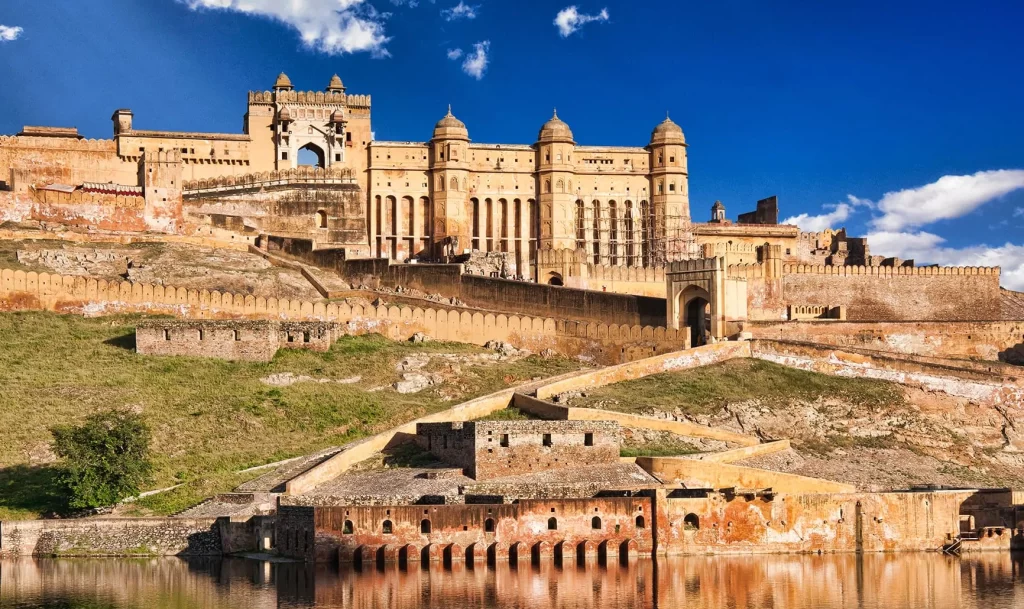India boasts centuries of culture and civilisation. From the Indus Valley Civilization to the Chola dynasty, to the Delhi Sultanate, the country has become a home to a tapestry of art, artefacts, and architectural masterpieces to birth a unique society. Some of these grandiose empires built big temples, the others built even bigger forts. Today, we explore the top 10 biggest fort in India.
1. Kangra Fort (368 AD)
At 463 acres, the Kangra Fort is one of the biggest and perhaps the oldest in India. The fort built by the Katoch dynasty is situated in Himachal Pradesh. The main entrance of the fort leads to a grand courtyard with two gates on either side. The fort has multiple water reservoirs in the form of wells. At present, 21 wells, each 4 meters deep, are open to the public. Some believe that there may be more hidden wells lurking within the Kangra Fort. The Kangra Fort has a plethora of doorways, each inscribed. Some of the popular tourist attractions include the ‘Ahani Darwaza,’ ‘Amiri Darwaza,’ ‘Darsani Darwaza,’ ‘Lakshmi-Narayana Shrine,’ ‘Ambika Devi Temple,’ and ‘Rishabhanatha Jain Temple.’
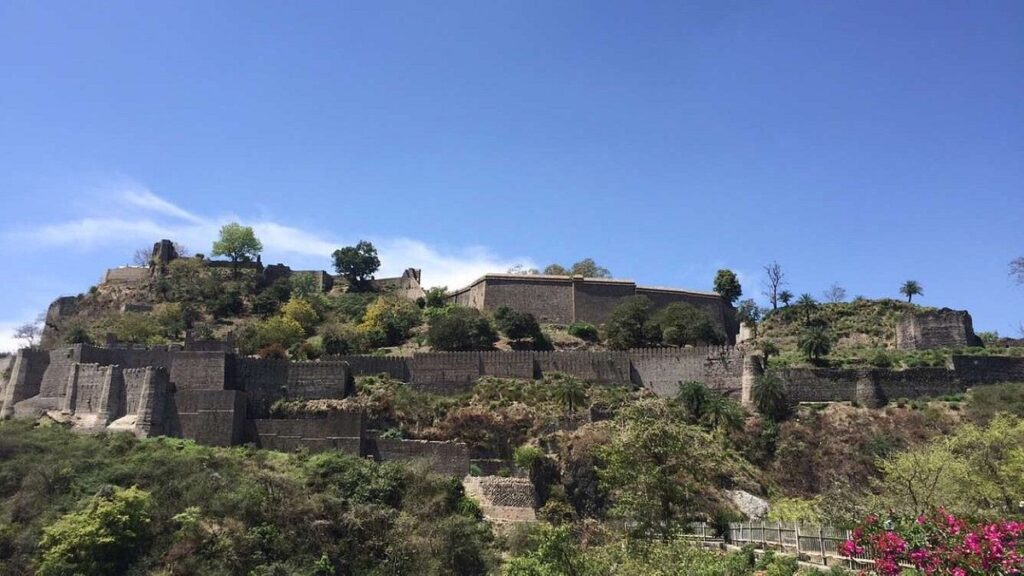
2. Chittor Fort (645 AD)
The Chittor Fort (Chittorgarh Fort or Chittod Fort) is one of the biggest and oldest forts in India built during the reign of the Mauryan empire. The fort served as the capital of Mewar. It sits atop a hill of 180 meters and covers an area of 692 acres. Once inside the Chittor Fort, you will see four palaces, 19 temples, 4 memorials, 20 water bodies, and numerous victory towers. In 2013, the Chittorgarh Fort was declared a UNESCO World Heritage Site. Some of the popular attractions include the seven humungous gates, ‘Vijaya Stambha,’ ‘Kirti Stambha,’ ‘Rana Kumbha Palace,’ ‘Fateh Prakash Palace,’ ‘Gaumukh Reservoir,’ ‘Meera Temple,’ and ‘Padmini’s Palace.’ The Chittor Fort is an excellent example of Rajput architecture.

3. Gwalior Fort (952 AD)
The critics are still divided over the origins of the massive Madhya Pradesh monument, the Gwalior Fort. Some believe the fort was constructed in the 10th century by Suraj Sen. The walls of the Gwalior Fort are made entirely of sandstone, which runs across an area of 741 acres. The fort houses multiple water tanks, ‘Man Mandir Palace,’ ‘Sas Bahu Temple,’ ‘Teli Ka Mandir,’ ‘Hathi Pol,’ and ‘Vikram Mahal.’ The second oldest reference of the numeral, ’0’ can be found carved within the palace temples.

4. Mudgal Fort (1053)
The Mudgal Fort is located in Bagalkot, Karnataka over an area of 10 acres. It was built by the Chalukyas and later renovated by the Bahmani Sultanate. Mudgal Fort’s architecture features a blend of Chalukyan and Bahmani styles, with its massive walls and strategic design aimed at defence. The fort’s historical significance lies in its role during the Deccan Sultanate era and its intricate defensive features.
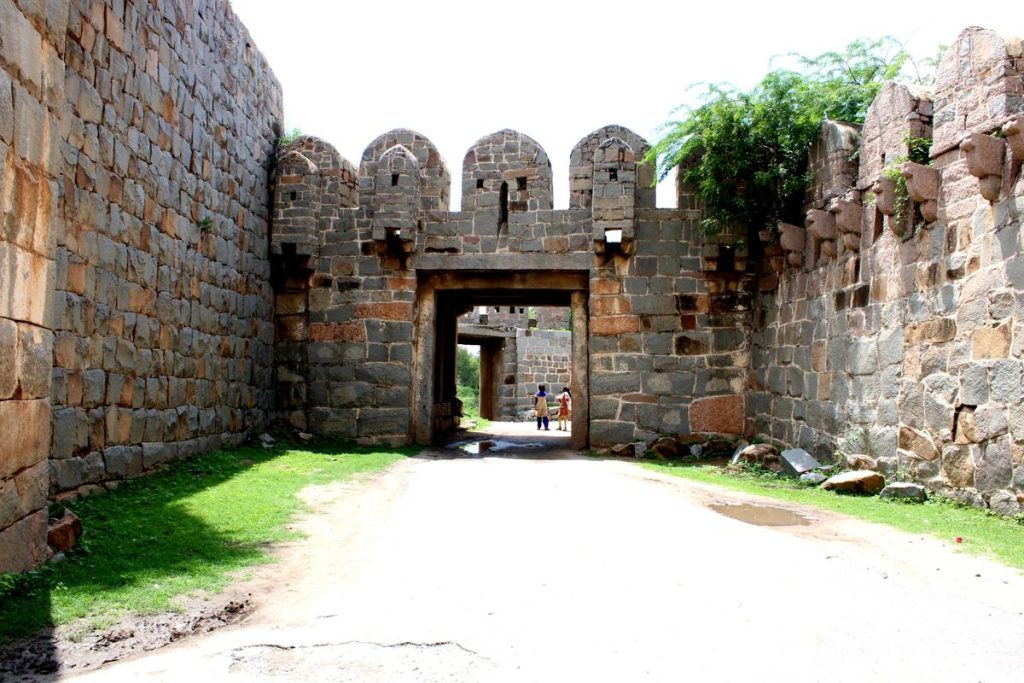
5. Golconda Fort (1143)
The Golconda Fort, Hyderabad is one of the biggest forts in India at 788 acres. The magnificent fort was built in the 12th century under the Kakatiya Dynasty. By the 16th century, it was rebuilt by several Qutub Shahi rulers. The fort was known as the mining capital, known for producing the most exquisite diamonds including the ‘Idol’s Eye,’ the ‘Hope Diamond,’ ‘Darya-i-noor’ and the famous ‘Koh-i-Noor.’ The popular tourist attractions at the Golconda Fort include the Qutub Shahi tombs, eight gateways, multiple bastions and drawbridges. The mysterious acoustic features of the palace hail from the clever Islamic architecture.
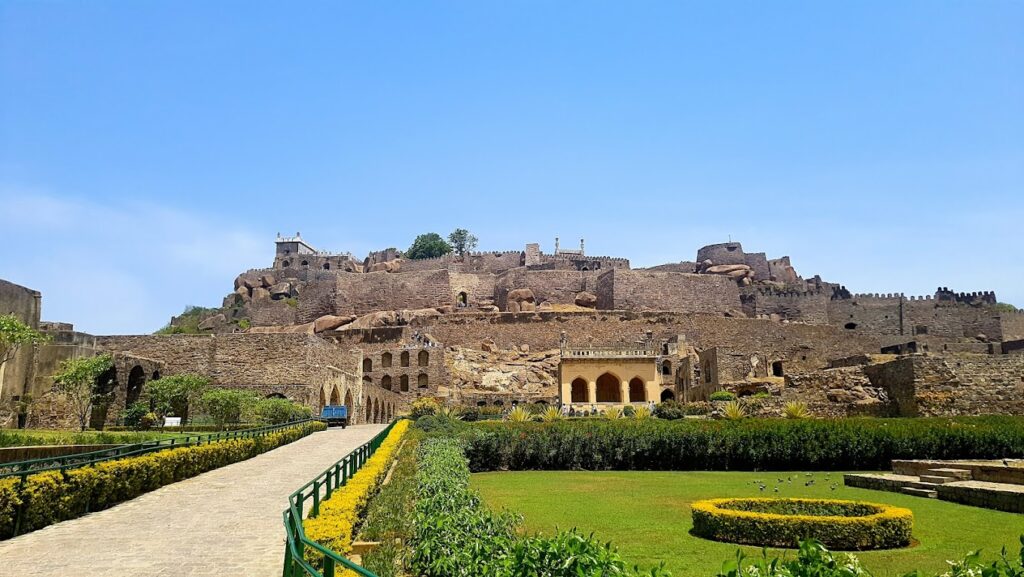
6. Jaisalmer Fort (1156)
The Jaisalmer Fort was built by Rao Jaisal in 1156 over 692 acres of land. Listed as a UNESCO World Heritage site, the fort features four entrances, each guarded by a canon. Made entirely of yellow sandstone, its resemblance to gold has earned it the name, ‘Sonar Mahal.’ A part of the city’s population lives within the Jaisalmer Fort. The popular attractions of the monument include ‘Maharwal Palace,’ ‘Raj Mahal,’ ‘Laxmikanth Temple,’ ‘Jain Temples,’ and ‘Dashera Chowk.’ The fort stands at a height of 250 ft, fortified by 30 ft walls. The numerous roofs at the Jaisalmer Fort offer a panoramic view of the entire city.
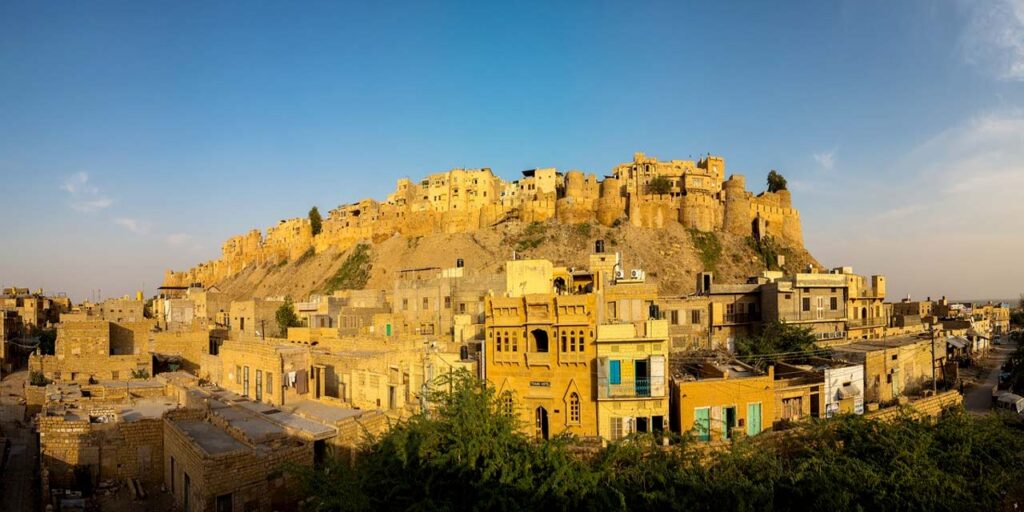
7. Panhala Fort (1178)
The Panhala Fort in Kolhapur covers an area of 130 acres and was built under the patronage of the Shilahara dynasty. It was built around the late 12th century by Raja Bhoja, with later renovations and expansions done by the Marathas. The fort can be accessed through a trek and was built to support the major trade route from Bijapur. It is a well-protected fortress, boasting three double-walled gates. The entire fort is covered with parapets, ramparts, and bastions. Once inside the Panhala Fort, you must visit the ‘Andhar Bhavadi,’ ‘Kalavanticha Mahal,’ ‘Sajja Kothi,’ ‘Ambabai Temple,’ and the ‘Sambhaji Temple.’
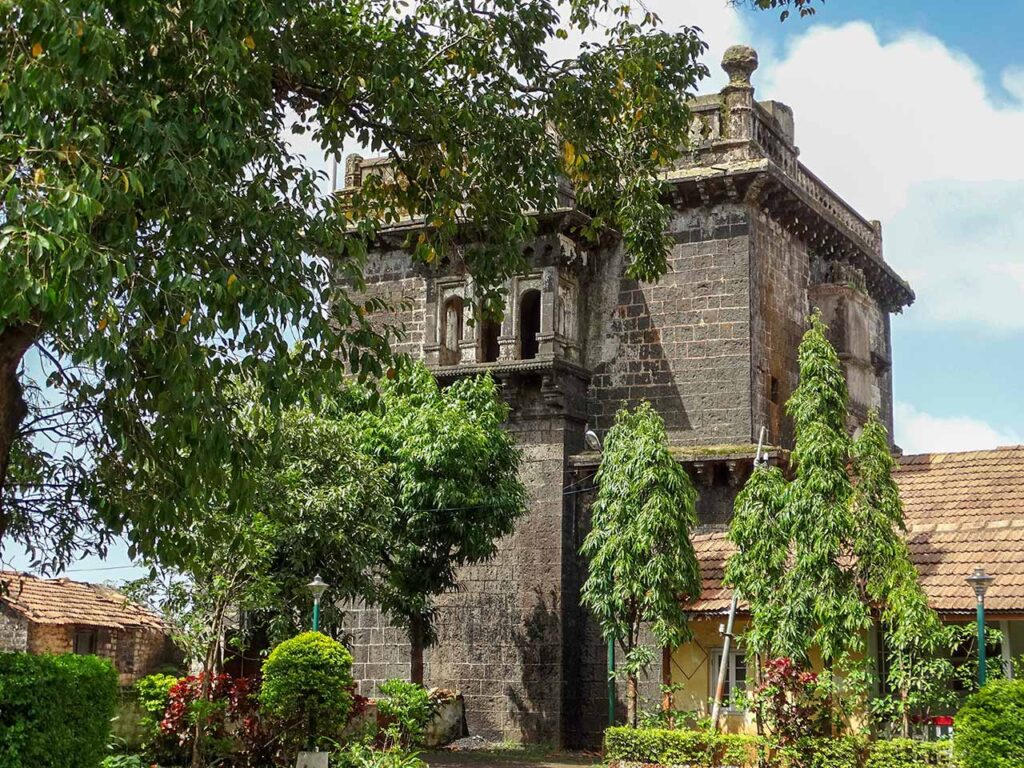
8. Vijaydurg Fort (1193-1205)
The Vijaydurg Fort is located in Vijaydurg, Maharashtra. It was renovated under the supervision of Chhatrapati Shivaji Maharaj. It is built over 1,037 acres. Also known as Victory Fort, it is a coastal fort built by the Shilahar dynasty and later developed by Chhatrapati Shivaji Maharaj. The fort’s architecture includes massive bastions and a fortified shoreline, making it an effective defence against naval invasions. Vijaydurg Fort’s strategic coastal location and formidable walls highlight its role in controlling maritime trade and defence.

9. Bidar Fort (1427)
Bidar Fort is located in Bidar, Karnataka and is spread across 100 acres. It was built by Sultan Alauddin Bahman Shah. The fort’s architecture showcases the Bahmani Sultanate’s influence, featuring a mix of Persian and Indian elements. Notable for its well-planned defensive systems, including massive walls and elaborate gateways, Bidar Fort is renowned for its intricate construction and historical significance as a major centre of the Bahmani kingdom.

10. Srirangapatna Fort (1454)
The Srirangapatna Fort was built over 240 acres of land in 1454. It was the epicentre of Tipu Sultan’s kingdom, constructed by Kempe Gowda. The splendid Indo-Islamic architecture is laden with intricate engravings and motifs. These motifs are also present in the two dungeons of the fort, said to house the captured British soldiers. The surrounding walls climb up to 40 ft in height. At the Srirangapatna Fort, you must visit the ‘Lal Mahal,’ ‘Daria Daulat Palace,’ Tipu Sultan’s tomb and the ‘Juma Masjid.’
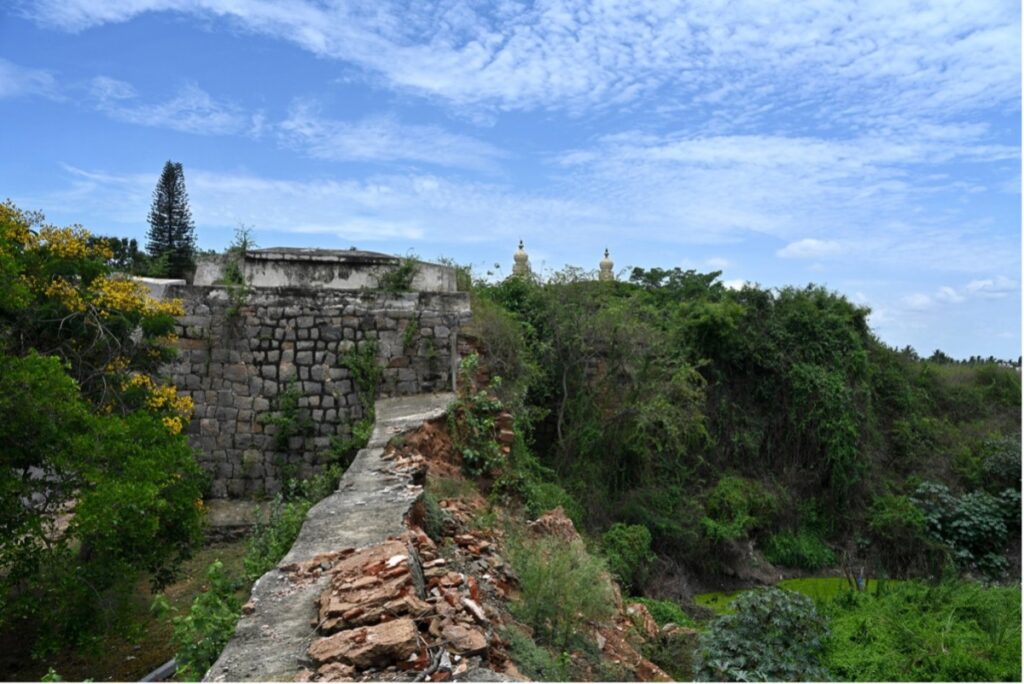
11. Mehrangarh Fort (1459)
The Mehrangarh Fort is situated at an altitude of 410 feet and is the biggest fort in India, covering 1200 acres. It was constructed in 1459 by Rao Jodha. The monument is a host to the World Sacred Spirit Festival and the Rajasthan International Folk Festival. At Mehrangarh Fort, one may enjoy the architectural nuances and glasswork of ‘Sheesh Mahal,’ ‘Phool Mahal,’ ‘Moti Mahal,’ and seven fortified gates. The fort complex houses six different galleries and museums namely, Elephant’s Howdahs, Palanquins, Daulat Khana, Armoury, Paintings and the Turban Gallery.

12. Orchha Fort (1501)
Orchha Fort is situated at Orchha, Madhya Pradesh. It is spread across 617 acres of land. It was constructed by the Bundela king Rudra Pratap Singh and is situated on the banks of the Betwa River. The fort is known for its stunning combination of medieval Rajput and Mughal architectural styles. Key highlights include the ‘Jahangir Mahal,’ which features exquisite frescoes and a blend of Rajput and Mughal design elements. Orchha Fort is celebrated for its beautiful palaces, temples, and decorative artwork.
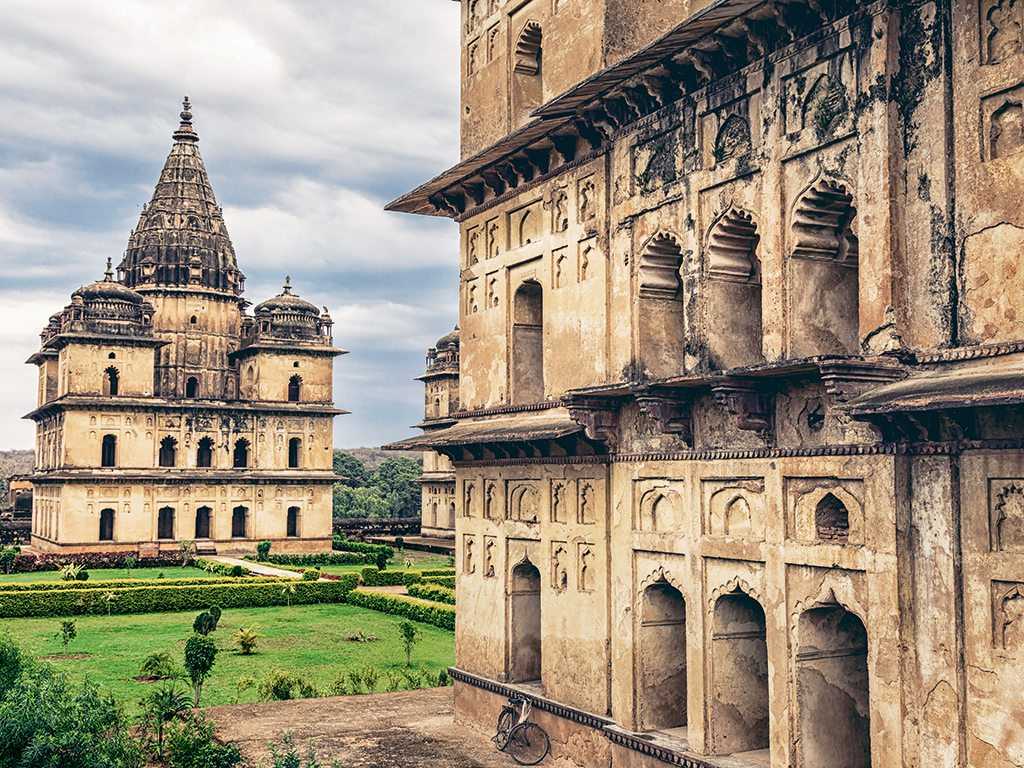
13. Agra Fort (1573)
The Agra Fort was constructed in 1573 as the royal residence of the Mughal empires, a purpose it served till 1638. It was originally built by Ibrahim Lodhi, but after his defeat by Babur, the fort passed onto the Mughals. It covers an area of 94 acres and is made of red sandstone, brought from Rajasthan. The Agra Fort stands as a prime example of Indo-Saracenic architecture. Some of the popular destinations within the complex include the ‘Nagina Masjid,’ ‘Mina Masjid,’ ‘Sheesh Mahal,’ ‘Jasmine Tower,’ and ‘Machchhi Bhavan.’ It is also known colloquially as ‘Lal –Qila,’ ‘Fort Rouge,’ or ‘Qila-i-Akbari.’

14. Red Fort (1639)
The iconic Red Fort dates back to the 17th century (1639). Since it is made of red sandstone, it is also known as ‘Lal Qila.’ It was formerly known as ‘Quila-e-Mubarak,’ or ‘Blessed Fort.’ The fort has an octagonal base which covers 254 acres of land. It was built by the Mughal ruler Shah Jahan, who envisioned Delhi as the ceremonial and political hub. The Red Fort comprises several attractions, namely ‘Diwan-i-Khas,’ ‘Diwan-i-Aam,’ ‘Moti Masjid,’ and ‘Nahr-i-Bashisht.’ The interior is embedded with precious and semi-precious stones and floral motifs. The monument is a testament to the glorious prowess of Persian and Indian architecture. In 2007, it was recognised as a UNESCO World Heritage Site.
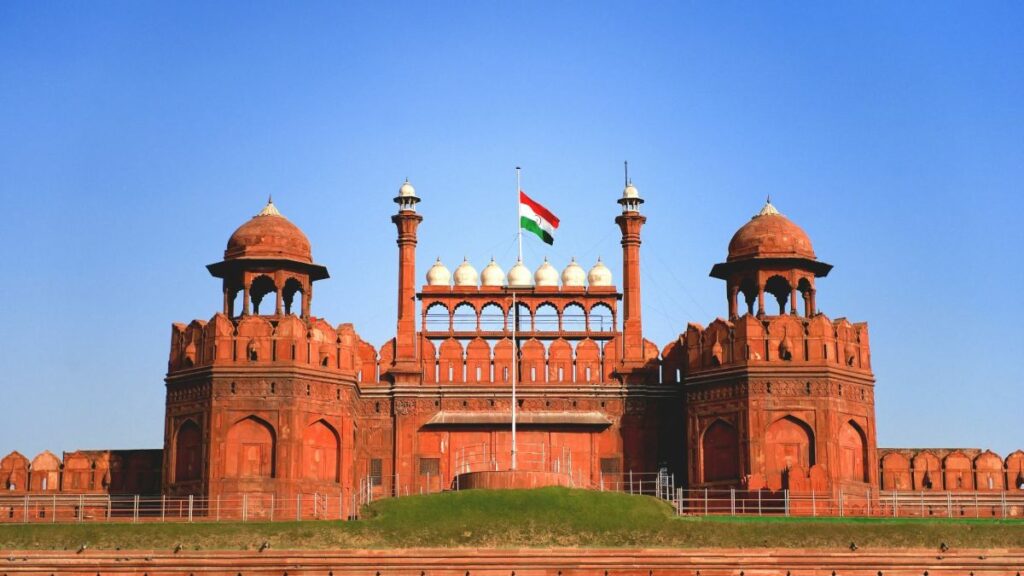
15. Amer Fort (1592)
Amer Fort is located in Amer, Rajasthan, covering 988 acres. Also known as Amber Fort, it is a stunning example of Rajput architecture. Constructed by Maharaja Man Singh I, it boasts a blend of Hindu and Mughal design elements. The fort is renowned for its majestic courtyards, ornate palaces, and intricate mirrorwork. Its walls are adorned with beautiful frescoes and mosaic designs that reflect the grandeur of the Rajput era, highlighted by the ‘Sheesh Mahal’ (Mirror Palace) and its intricate mirror work. Amer Fort’s design emphasizes grandeur and defensive fortifications with its imposing walls and strategic location on a hill.

16. Rajgad (1646)
Pune, Maharashtra is the location of Rajgad Fort. It was built on 100 acres of land by the Maratha king Chhatrapati Shivaji Maharaj. It is one of the oldest and largest forts in India. It served as Shivaji’s first capital and is an excellent example of Maratha military architecture. The fort is known for its strategic location and expansive design, including numerous structures such as the ‘Padmavati Machi,’ ‘Suvela Machi,’ and the ‘Bale Killa’ (the fort’s citadel). Rajgad Fort’s rugged design was intended to make it difficult for enemies to capture.
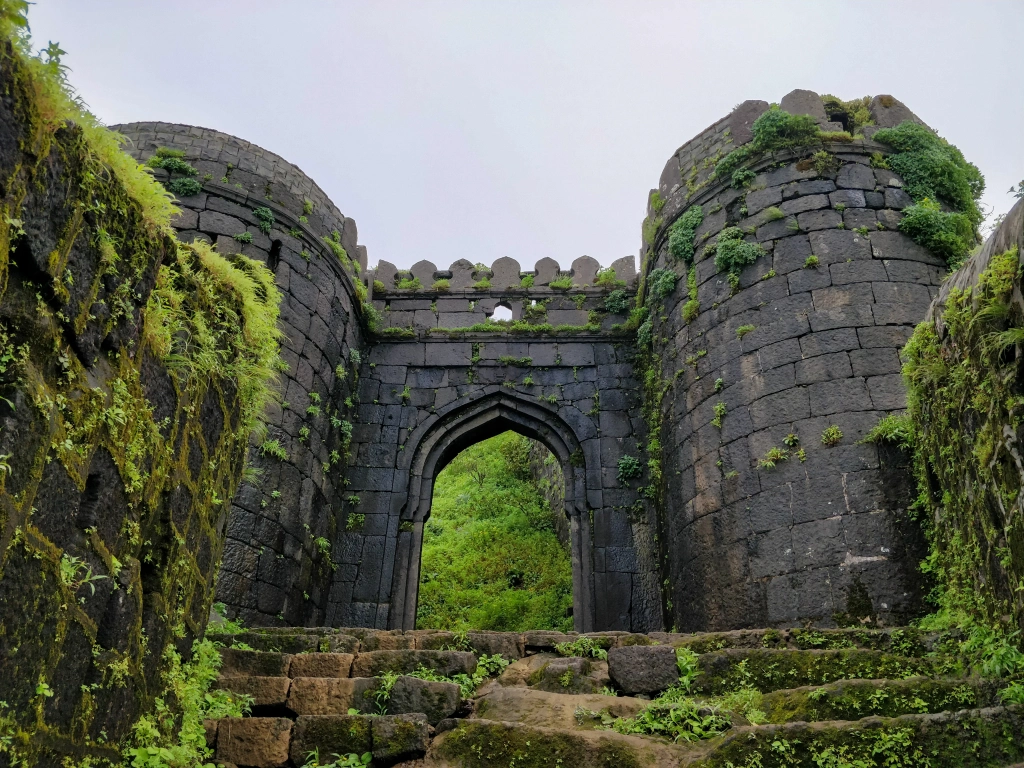
17. Bhujia Fort (1715-1741)
Bhujia Fort is located in Bhuj, Gujarat covering a span of 741 acres. Perched on the Bhujia Hill, was built to safeguard the city of Bhuj. The fort’s architecture features strong defensive walls and strategic watchtowers. Bhujia fort offers breathtaking views of the surrounding landscape and has historical importance as a key defence point for the region. The design reflects the strategic needs of its time, with an emphasis on elevation and visibility.
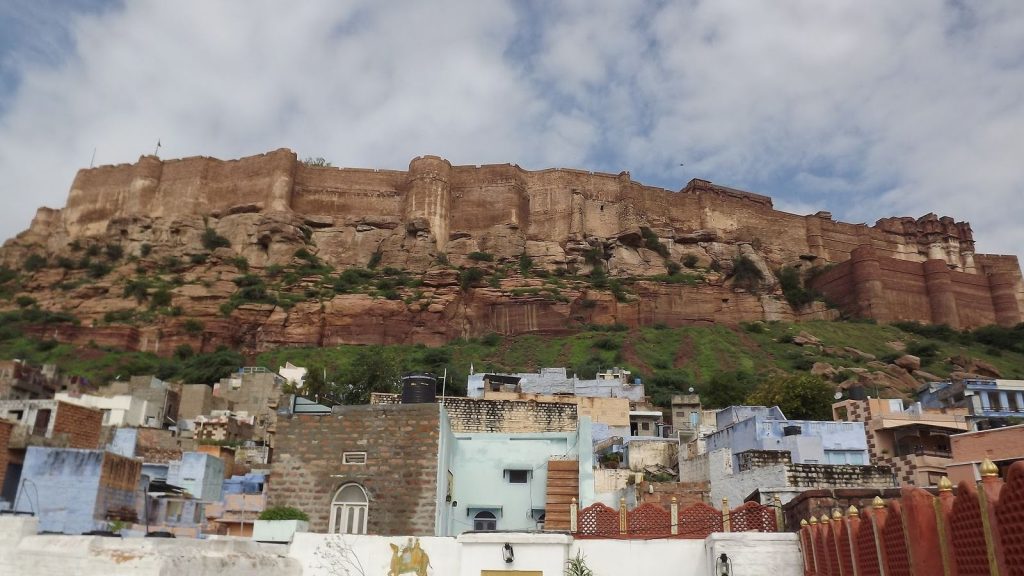
18. Jaigarh Fort (1726)
Jaigarh Fort is situated atop 1,383 acres of land and is one of the biggest and oldest forts in India. Adjacent to Amer Fort, Jaigarh Fort was constructed by Maharaja Sawai Jai Singh II. This fort is renowned for its massive walls and its strategic location overlooking the Amer Fort. Known as the ‘Victory Fort,’ it was designed to protect the Amer Fort and its palace complex. Jaigarh Fort houses the world’s largest cannon on wheels, the ‘Jaivana Cannon.’

19. Lohagad (1732)
Lohagad Fort, situated near Lonavala, on 345 acres is renowned for its strong fortifications and panoramic views. The fort’s design is characterized by its steep walls and strategic location atop a hill. The fort is notable for its impressive entrance gates, including the ‘Maha Darwaza,’ and its role in the Maratha Empire’s defence strategies. Lohagad Fort is an example of robust fortification techniques employed during the Maratha era.
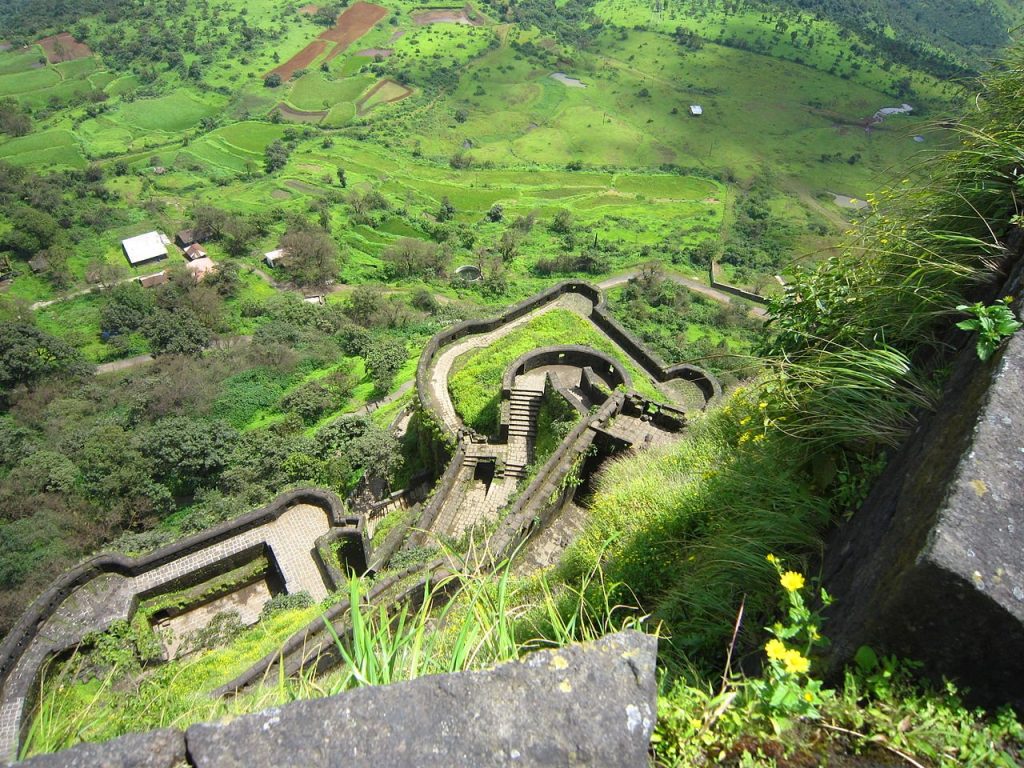
20. Palakkad Fort (1766)
Palakkad, Kerala is home to the Palakkad Fort covering an area of 112 acres. It was originally built by Hyder Ali of the Mysore Sultanate. The fort is a classic example of 18th-century military architecture. Its design includes a moat and sturdy walls, reflecting the strategic importance of the location. Palakkad fort has been well-preserved and now serves as a historic site, offering visitors insights into its past through its remaining structures and the surrounding landscape.
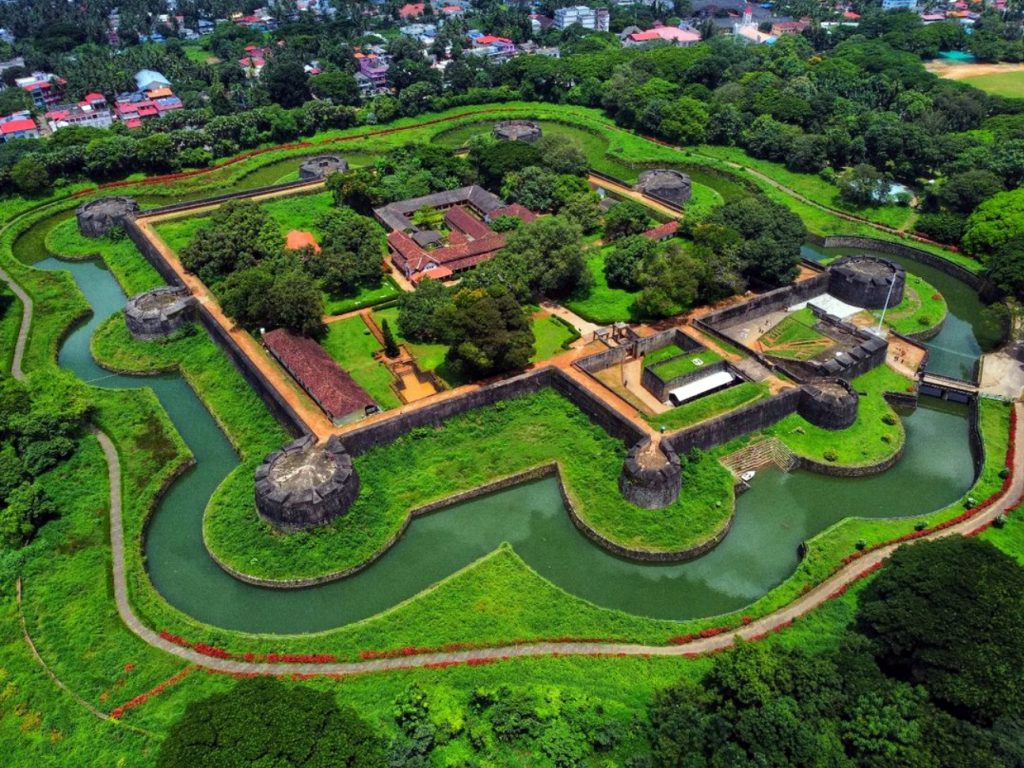
Image Courtesy – OYO

